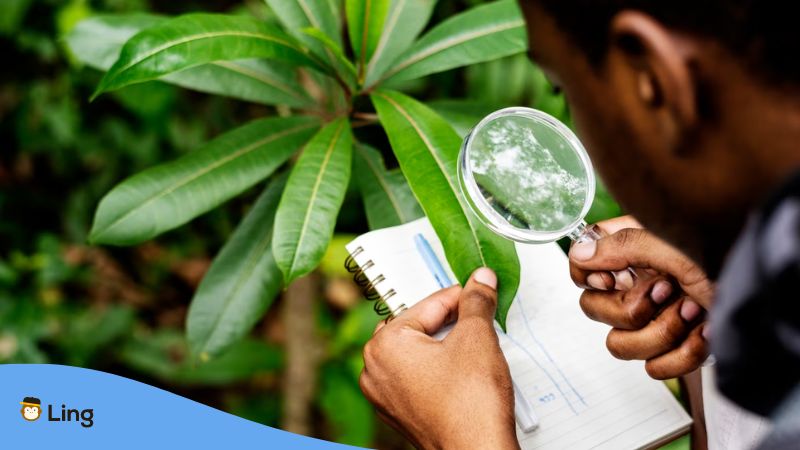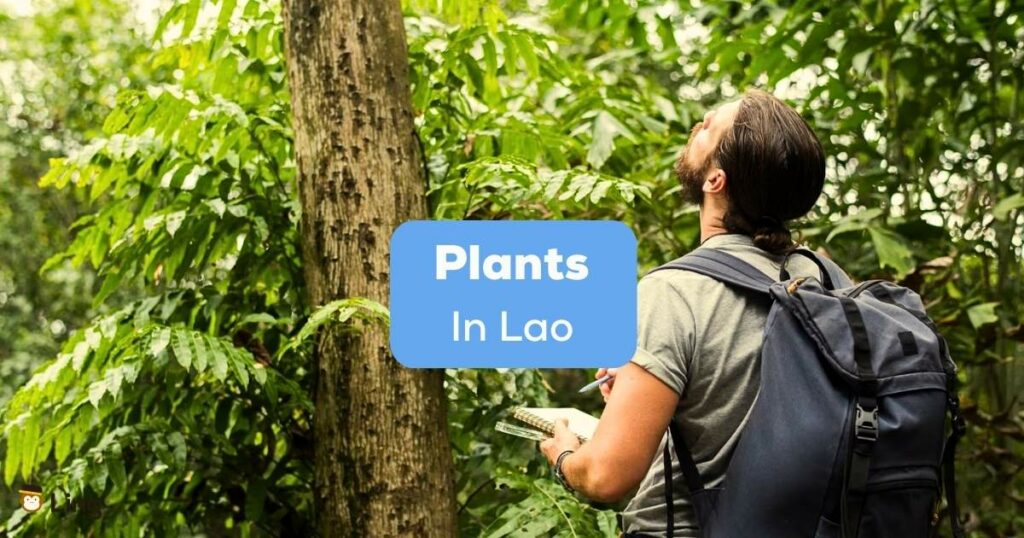You’re learning the Lao language and stumbled upon something intriguing: plants. In Laos, plants are more than just part of the landscape. They’re a vital part of life, culture, and even language. You’ll find them in local markets, traditional medicine, and on dinner plates.
Ready to explore? This article is your guide to the world of plants in Lao. You’ll learn the names of common plants, discover their roles in daily life, and connect with a rich and vibrant culture. Let’s get started!
Common Plant Names In Lao
Dive into the Lao language, and you’ll find a world where plants are more than just greenery. They’re part of the daily life, traditions, and even the soul of Laos.
Trees And Shrubs
Have you ever noticed how trees and shrubs are more than decorations in Laos? They’re community symbols, craft materials, and even a source of refreshment.
- Banyan Tree (ບົວ – bou): Stands tall near temples, a gathering spot for locals, and a shade provider during hot days.
- Teak (ຕີກ – tik): Strong and durable, a favorite among craftsmen for furniture, a true reflection of Lao artistry.
- Hibiscus (ບົວຊີບ – bou sib): Bright, colorful, and often turned into herbal teas, a garden’s delight.
Flowers And Ornamentals
In Laos, flowers aren’t just for looking pretty. They carry meanings, grace ceremonies, and even become personal adornments.
- Lotus (ບູາ – bua): A symbol of purity in Buddhism, elegant and often seen in religious settings.
- Jasmine (ມະລິກາ – malika): Sweet-scented, a favorite for offerings and perfumes, a graceful touch to any occasion.
- Orchids (ອໍກິດ – or kid): A gardener’s treasure and a proud part of the country’s botanical heritage.
Fruits And Vegetables
Stroll through a local market, and you’ll be greeted by a colorful display of fruits and vegetables. Each one tells a story of taste, season, and local favorites.
- Bananas (ກວຍ – kuai): Ripe or fried, a snack you’ll find everywhere, a true taste of Laos.
- Mangoes (ມາຫມວ່າງ – ma muang): Juicy and sweet, a hot season treat, a flavor you won’t forget.
- Papaya (ຫມາກຫຸ່ມ – mak huem): Spicy in a salad or sweet when ripe, a versatile fruit loved by locals.

Medicinal Plants
Healing in Laos goes beyond the doctor’s office. Plants are remedies, comfort, and a connection to ancient wisdom.
- Lemongrass (ຫນາວຫນາມຫມານ – nao nam man): A kitchen herb turned soothing tea, a natural way to ease digestion.
- Turmeric (ຫນາວຄາມິນ – nao kamin): Golden and powerful, it eases joint pain, a root with healing at its core.
The Role Of Plants In Traditional Lao Medicine
In Laos, plants are more than just remedies. They’re a bridge between human health and spiritual practices. Let’s delve into this fascinating aspect of Lao culture, where nature meets tradition.
Healing Herbs And Roots
Herbs and roots are the essence of traditional Lao medicine. They’re not just ingredients. They’re a connection to a rich heritage.
- Ginger (ຂີ້ຫນາວ – khi nao): A common cold fighter, also used for respiratory issues, a warming touch to many dishes.
- Garlic (ກະທຽມ – ka thiam): Boosts immunity and is often used against infections, a staple in both the kitchen and medicine cabinet.
- Mint (ບົວຊີບຫນາມຫມານ – bou sib nam man): Soothes stomach ailments, a refreshing flavor, a versatile herb in Lao healing.
Preparation And Usage
Preparing medicinal plants in Laos is an art, a science, and a tradition all rolled into one. Let’s explore how these plants are transformed into healing remedies.
- Tamarind (ມາກຫມາກຫຸ່ມ – mak mak hum): Boiled to a concentrate, used for digestive issues, a tangy touch to many treatments.
- Moringa (ມາຣຸ່ງກາ – ma rung ga): Dried and powdered, a versatile remedy, a tree with many healing branches.
Connection To Lao Spirituality
Plants in Laos are more than physical healers. They’re spiritual guides. Let’s see how they cleanse the spirit and protect against negative energies.
- White Sage (ສາລີໃບຂາວ – sa li bai khao): Used in sacred rituals, a spiritual cleanser, a bridge between the earthly and the divine.
- Banana Tree (ກວຍ – kuai): Considered sacred, often used in offerings, a symbol of fertility and prosperity.
Plants In Laos Cuisine
Laos offers a culinary journey where plants are the stars, adding flavors, textures, and traditions. Let’s taste the unique ways plants shape the food culture of Lao people.
Wild Vegetables And Edible Plants
Foraging in Laos is a culinary adventure. Wild vegetables and edible plants bring authenticity and depth to traditional recipes.
- Ferns (ຜັກຂີ້ – pak khi): Often sautéed with garlic, a wild touch to many dishes, a taste of the Laotian forest.
- Bamboo Shoots (ནྱོར་མ – nyor ma): Key in soups, a crunchy texture, and a bamboo flavor that’s uniquely Laos.
Culinary Techniques And Traditions
Lao cuisine is a dance of flavors, and plants play a leading role. Let’s explore how they’re used in traditional dishes.
- Sticky Rice (ອາຫານເຂົ້າໜຽວ – ahan khao niao): Steamed in Banana Leaves, a daily staple, a texture that’s loved by all.
- Lemongrass (ຫນາວຫນາມຫມານ – nao nam man): Finely chopped in Laap, a flavor that defines a beloved meat salad, a herb that’s quintessentially Lao.
Influence On Local Markets
Local markets in Laos are a celebration of fresh produce. Let’s see how they connect farmers to the flavors of Lao cuisine.
- Tamarind (ມາກຫມາກຫຸ່ມ – mak mak hum): Sold locally for its tangy taste, a must-have in many dishes, a flavor that’s uniquely Lao.
- Galangal (ຂີ້ຄາ – khi kha): A root that’s essential in Lao kitchens, a spicy kick to many recipes, a taste that’s hard to forget.

Conservation Efforts For Native And Endangered Species
Laos is home to many species of plants in Southeast Asia, some facing extinction. Conservation here involves communities, government, and organizations. Let’s see how Laos protects its botanical treasures.
Protecting Wild Species
In Laos, wild plants like the endangered Bengal Ironwood, known as ຕັກຄະ (tak kha), are a priority.
Educational programs teach locals about sustainable harvesting. This ensures that future generations can enjoy these natural resources.
Government Regulations And Initiatives
Laos has strong regulations to protect native and endangered plants. Laws prevent illegal logging, and reforestation projects are in place.
Unique species like the Laos Orchid, or ອໍກິດລາວ (or kid lao), are conserved in protected areas.
Learn The Plants In Lao With Ling!
You’ve journeyed through the vibrant world of plants in Lao, discovering their significance in culture, medicine, cuisine, and conservation. Now, it’s time to take your learning further with the Ling app.
The Ling app is dedicated to bringing you 60+ languages, including Lao, through interactive games and fun activities. Whether you’re a beginner or looking to enhance your skills, the Ling app has something for everyone.
Ready to explore the Lao language and more? Download the Ling app today on Google Play and App Store and start your language-learning adventure!



































































